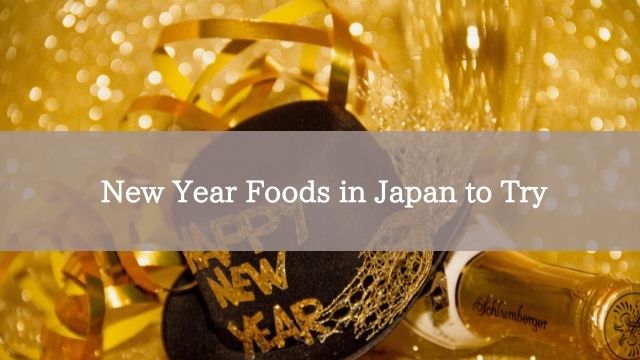Another New Year has come and wishes for abundance, and betterment for overall quality of life is one of the common things we pray for. In Japan, to celebrate the New Years, there is a New Year’s food or Osechi Ryori. The food is served in one or more bentos and most of them are pickled due that before, refrigeration is inexistent. Let’s know more about Osechi Ryori!
New Year Foods in Japan
What are these osechi ryori? The food in it is based on the wishes of an individual with symbolic meanings. It can be anything; success in work or academics, prosperity, luck, or good health. In this article, we will list all the common New Year’s Food that are considered Osechi Ryori.
Mochi
Probably the most popular of the Japanese confections, mochi symbolizes good luck. And if you pick this, then you’re wishing to gain some more luck in the coming new year. Also, you cannot celebrate new year without mochi at your table. Even the pronunciation of mochi, it sounds like, “to hold” or “to have” and thus, eating mochi will help you out in getting a good fate. There is even an event during new years called mochitsuki taikai or a traditional rice pounding tournament where you can get a fresh, soft, authentic mochi. If you are looking into decorating mochi for your New Year banquet, get the kagami mochi, which is the traditional New Year mochi.
Kabu-no-sunomono
To celebrate a golden-like new year, symbolizing happy occasions, kabu-no-sonomono or pickled baby turnips is served. It is usually sliced thinly and decorated into a chrysanthemum-shaped flower.
Chrysanthemum flower is Japan’s Emperor’s symbol and thus, this is a bountiful symbol. It’s taste has it’s vinegar-y sugar and salt taste due to it’s mixture and often pepper is drizzled on top to give it some color and spice. The delicious pickle is perfect for New Year and an osechi ryori.
Toshikoshi Soba
If you love a hearty noodle dish this New Year, then definitely go to toshikoshi soba which is the New Year’s noodle. It uses soba or buckwheat noodles which have an earthy, brown color. This soba has been present since the Edo period and has a beautiful symbolism. It is commonly dubbed as the “year-crossing noodle” which means longevity and cutting off the noodle is removing negativity and problems from the past year. Moreover, it is a very soothing dish, it is comforting and hopeful, like what we felt during a new year.
Datemaki
If you want good luck and success in studying and academics then datemaki is another dish you need to serve at your New Year’s dinner table. Datemaki is a fish and sweet omelet dish, rolled to look like naruto and served with a savory paste. Datemaki is indeed sweet because the egg is mixed with mirin, honey and balanced with soy sauce. The fish ingredient came from a fish cake called hanpen and thus makes the dish fluffy.
Interestingly, because of its shape resembling a scroll, it makes it even more symbolic as good luck for studying.
Conclusion
New Year’s holiday is an important event for the new year, giving us time to set our intentions, realize our goals and be more hopeful and positive. A good, symbolic food for New Year is even prevalent in different cultures, a way to give importance to life as we embark on new challenges.
So what about you? What will you serve this new year?
References:
https://www.justonecookbook.com/osechi-ryori-japanese-new-year-food/
https://we-xpats.com/en/guide/as/jp/detail/4769/
https://www.hisgo.com/us/destination-japan/blog/japanese_new_years_food.html
https://www.tsunagujapan.com/19-dishes-you-can-find-in-traditional-japanese-new-year-food/
https://norecipes.com/osechi-ryori-japanese-new-years-food/
https://www.bokksu.com/blogs/news/5-japanese-new-year-foods-to-start-the-year-right

